- News
- Reviews
- Bikes
- Components
- Bar tape & grips
- Bottom brackets
- Brake & gear cables
- Brake & STI levers
- Brake pads & spares
- Brakes
- Cassettes & freewheels
- Chains
- Chainsets & chainrings
- Derailleurs - front
- Derailleurs - rear
- Forks
- Gear levers & shifters
- Groupsets
- Handlebars & extensions
- Headsets
- Hubs
- Inner tubes
- Pedals
- Quick releases & skewers
- Saddles
- Seatposts
- Stems
- Wheels
- Tyres
- Tubeless valves
- Accessories
- Accessories - misc
- Computer mounts
- Bags
- Bar ends
- Bike bags & cases
- Bottle cages
- Bottles
- Cameras
- Car racks
- Child seats
- Computers
- Glasses
- GPS units
- Helmets
- Lights - front
- Lights - rear
- Lights - sets
- Locks
- Mirrors
- Mudguards
- Racks
- Pumps & CO2 inflators
- Puncture kits
- Reflectives
- Smart watches
- Stands and racks
- Trailers
- Clothing
- Health, fitness and nutrition
- Tools and workshop
- Miscellaneous
- Buyers Guides
- Features
- Forum
- Recommends
- Podcast
review
£4,000.00
VERDICT:
Quick and lively aero gravel bike with plenty of tyre clearance and Shimano's GRX components
Excellent frameset
Shimano GRX components
Big clearance
Complicated seatpost clamp
Weight:
9,280g
Contact:
At road.cc every product is thoroughly tested for as long as it takes to get a proper insight into how well it works. Our reviewers are experienced cyclists that we trust to be objective. While we strive to ensure that opinions expressed are backed up by facts, reviews are by their nature an informed opinion, not a definitive verdict. We don't intentionally try to break anything (except locks) but we do try to look for weak points in any design. The overall score is not just an average of the other scores: it reflects both a product's function and value – with value determined by how a product compares with items of similar spec, quality, and price.
What the road.cc scores meanGood scores are more common than bad, because fortunately good products are more common than bad.
- Exceptional
- Excellent
- Very Good
- Good
- Quite good
- Average
- Not so good
- Poor
- Bad
- Appalling
The 3T Exploro Pro GRX is an excellent gravel bike that's focused on aero efficiency, and this is the first complete bike in the range to be specced with a Shimano groupset. With loads of tyre clearance, it offers plenty of comfort and control to go along with its speed.
3T unveiled the Exploro, designed by Gerard Vroomen (the co-founder of Cervélo who has gone on to design bikes at Open as well as at 3T), back in 2016, calling it "the world's first aero gravel bike". Fusing different genres can be chancy. You might end up with something cool like salted caramel popcorn, or you might end up with something hideous like a liver trifle. Thankfully, when we reviewed the 3T Exploro Ltd frameset here on road.cc we found that it was – and it remains – a triumph.
> Find your nearest dealer here
Since then 3T has added complete bikes to the range, two of them built around the Exploro Pro frameset which is a little heavier than either the original Ltd or Team models. Featuring new GRX components, this is the only Shimano-equipped Exploro in the lineup.
Right, that's enough context, how does this thing ride?
The ride
You get gravel bikes that owe a lot to mountain bikes – like the Merida Silex+ 6000 that I reviewed last month, for example – and you get others that are a lot more roadie. The Exploro Pro GRX falls into the latter category. It might not be all about speed, but it's a lot about speed.
When I reviewed the Exploro Ltd I said that it was a blast on gravel, or whatever fairly well-surfaced, fairly well-drained tracks you have around your way. The Exploro Pro GRX is the same. It's at its best when you can get down on the drops, wind up the power and hold it there, so its favourite environment is open terrain with empty tracks that roll off into the sunset – but, failing that, it'll settle for anything that's reasonably solid! It feels great when you crank up the speed.
> Is a gravel/adventure bike all you need?
The Exploro Pro GRX responds well to increased effort – even though it's 1kg heavier than the built-up 3T Exploro Ltd that we reviewed back in 2016 – and shifts line easily with changes in body position to dodge the biggest, deepest-looking puddles. When things get technical, the steering is lively enough for plenty of manoeuvrability, and 415mm chainstays keep the wheelbase short for a bike of this kind. Overall, if you put the 37mm-wide tyres to one side, the handling is similar to that of a road bike.
I've been riding this bike in January and February and even well-maintained stone and gravel roads have been soaked through, so rather than singing along on the surface, it has largely been a case of ploughing through the stodge. As for those bridleways that are muddy at the best of times, they've been more like marshland.
Tyre selection becomes a big issue in conditions like these and the WTB Riddlers fitted to the Fulcrum Racing 700 wheels have provided good grip on anything relatively firm, even through tight corners where you think they might not cope. They're also reasonably quick on tarmac; you don't really feel that you're being held back too much compared with road bike tyres.
The Riddler is a great tyre for a bike that's likely to spend its life on a mixture of tracks and tarmac, but if you veer onto anything muddy you have to start riding a bit more gingerly (I'm talking about good old sloppy mud here, not compacted earth which isn't a challenge), staying seated on steep climbs so that the back wheel doesn't spin, for example. The central tread is shallow and can struggle to grip into anything too deep.
If you want to fit different tyres depending on the conditions, there's enough clearance to go up to 40mm wide on these 700C wheels, or up to 54mm (2.1in) if you switched to 650B wheels.
The dropped driveside chainstay helps provide the space without making any difference to the way the bike feels.
Geometry
All versions of the 3T Exploro frame are built to the same geometry, one that's tailored towards fast riding. You, as the rider, have a much larger effect on aero efficiency than any tube shaping or smart frame features (more on those in a mo), so an aggressive setup makes sense on a bike like this.
I've been riding a large sized Exploro Pro GRX with a 571mm top tube, a 518mm seat tube, and a short 150mm head tube. Both the head tube angle and the seat tube angle are 72.5 degrees.
The stack height is 575mm and the reach is 390mm, giving a stack/reach of 1.47. That's road bike territory, but bear in mind that the Exploro comes with an inline seatpost – the clamp sits directly over the centre of the post without any layback – and that shortens things up. In other words, the distance from the saddle to the handlebar is less than the stack and reach figures might suggest.
It's still a speed-orientated geometry, though. If you're coming from a road bike background you'll probably get along with this position just fine. You can easily get into a low 'attack' position down on the drops when you want to push the speed, and even when you're sitting up on the hoods you don't feel like the wind is hitting you full on your chest.
On the flip side, if you want an upright, mountain bike-style position for tackling more technical terrain, that's not what's on offer here. You can't have everything!
Also, while we're talking about positioning, the 3T Superergo PRO handlebar measures 44cm centre-to-centre on the medium, large and XL sized Exploro Pro GRXs; there's none of the flare (where the drops angle outwards from the hoods) that you get on many gravel bars, including 3T's own Superghiaia design.
I must say that I've become partial to a bit of flare lately, the wider stance making for easier control over tricky terrain, and I missed not having it. Admittedly, adding extra width wouldn't be the best option in terms of aero efficiency.
Frame features
The Exploro Pro boasts all of the aero features found on other models in the range, meaning that it has what 3T calls Sqaero tube profiles. The leading edge and sides are designed for aerodynamic efficiency while the back is squared off, the idea being that the airflow behaves largely as if the profile had a long, tapering tail. Other brands follow the same principle. As well as reducing drag, this profile is designed to provide strength and stiffness without making the frame too difficult to handle in crosswinds.
You might not associate wide tubes with aero efficiency but 3T says the down tube has to be 50mm wide to manage the airflow coming off a wide front tyre and lead it on to the water bottles. The idea is that the seat tube 'aerodynamically disappears' between the bottles and the rear tyre.
The head tube, seatstays and seatpost all use Sqaero profiles too.
The result of all this aero shaping, according to 3T, is that at 20mph (32km/h) the Exploro saves 7 watts over a round tube frame with the same tube widths, the same frame details and the same components. At 30mph (48km/h) it would be a saving of 24 watts.
3T reckons that you still get the aero benefits when the bike is caked in mud – and if you live in the UK, it's probably going to spend a lot of time that way.
The gear cable and the hydraulic brake hoses are routed internally via the FlipTop cable guide on the top tube. This comes in different versions for mechanical and electronic shifting, and single and double chainsets. 3T uses full cable housing through the frame for mechanical shifting to keep the cables protected from dirt.
You can choose between two bottle cage positions on the down tube, although you need to opt for the upper one if you also want to attach a bottle cage to the seat tube. If you're installing just one, the lower position results in less drag.
You also get two attachment anchors for a top tube bento box, but there are no rack or mudguard eyelets. 3T reckons that these days people are more likely to choose frame bags for weekend adventures.
One other frame feature that's worth mentioning is the Hang Loose rear derailleur hanger. You'd better be ready for this one or you'll think that your bike is falling apart the first time you drop the rear wheel out.
Essentially, the rear derailleur hanger comes away when you remove the wheel's thru-axle, the idea being that it makes re-installing the rear wheel easier later on. You put the rear wheel in position and get the brake rotor alignment right, then you install the thru-axle to stabilise the wheel before installing the Hang Loose hanger. It sounds complicated but it's actually very simple.
The same can't be said of the clamp on top of the seatpost. If you want to alter the angle of your saddle you have to take it off completely and change the position of two interlocking rings, then put everything back together and judge whether you've got it right. It's quite an intricate operation although, once set right, it's never going to move.
Shimano groupset
The Pro GRX is the first – and currently the only – Shimano-equipped Exploro in the range, the other five complete bikes all coming with SRAM components of one kind or another. This isn't surprising given that SRAM was quick to jump on board the gravel train while Shimano was a whole lot more circumspect, announcing its gravel-specific GRX lineup less than a year ago.
> Check out our complete guide to Shimano’s GRX gravel groupset
GRX comes in three different flavours (although you can't buy all components in each of them) and you get the lot here: the rear derailleur is top-level GRX 800, the shift/brake levers and 40-tooth chainset are mid-level GRX 600, and the hydraulic disc brakes are entry-level GRX 400 (although they have resin rather than ceramic pistons, there's not a whole lot of difference between these and the more expensive GRX 800-level brakes).
GRX doesn't include cassettes. Instead, these are borrowed from elsewhere in Shimano's range, in this case from the SLX mountain bike groupset. It's an 11-42-tooth option (42-tooth is the maximum sprocket size that Shimano suggests with GRX).
The 40x11 combo (with the 700x37mm tyre fitted here) gives you a top gear of just under 100in, while the 40x42 low gear is just over 26in. That's small. It'll allow you to get the unladen Exploro Pro GRX up pretty much anything without your quads twanging. Load the bike up with bags and head off for an adventure and you'll still get up most climbs that you're reasonably going to tackle – not fast, admittedly, but eventually.
To put that gear range in a roadie context, a 50/34t chainset and 11-30t cassette, with a 700x28mm tyre, would give you 30in to 121in – so you don't get the high gears on the Exploro Pro GRX. In truth, you do sometimes feel undergeared on the road, your cadence hitting 100rpm in 40x11 before you get to 30mph, but it's unlikely to be an issue on tracks where speeds are generally slower.
I won't go into any great depth on GRX here because we've reviewed it extensively elsewhere, but the rear derailleur worked flawlessly throughout testing, the dual control levers were comfortable both when resting on the hoods and during braking, and the brake callipers (now flat mount) functioned exactly the way you'd want them to. It's impressive stuff.
Money bit
We've not tested many four grand gravel bikes previously on road.cc, although the Pinarello Grevil that Stu reviewed last year was £4,500.
The Grevil is similar to the Exploro in having a carbon fibre frame with aerodynamic tube sections and an aggressive geometry, although our test bike was fitted with a Shimano Ultegra 50/34t chainset and an 11-32t cassette – which is what you might expect to see on a road bike. The Grevil had the same Fulcrum Racing 7 DB wheels as our Exploro (Racing 7s and Racing 700s are exactly the same apart from the graphics), albeit in a 650B size.
> Buyer's Guide: 22 of the best gravel & adventure bikes
The Salsa Warroad that we reviewed was £3,750 – a bike designed to be capable on the road, on gravel and everything in between. It had a Shimano 105 groupset, WTB wheels and 47mm WTB Byway tyres.
The 3T Exploro offers better value than either of these bikes, although you could get the Grail CF SL 8.0 Di2 from Canyon – a brand with a direct-to-consumer business model – for £3,149.
Conclusion
You might not be convinced of the benefits of an aero gravel bike, but ride the 3T Exploro Pro GRX and it will win you over. This bike can certainly handle more technical terrain, but it really shows its worth when you're riding at speed, and it crosses over to tarmac without missing a beat. If you're after a bike for fast-paced gravel riding, including events like The Dirty Reiver and Gritfest, the Exploro is hard to beat.
Verdict
Quick and lively aero gravel bike with plenty of tyre clearance and Shimano's GRX components
road.cc test report
Make and model: 3T Exploro Pro GRX
Size tested: Large
About the bike
List the components used to build up the bike.
Frame Exploro PRO, unidirectional pre-preg carbon, high-modulus/high-strength performance blend layup
Fork 3T Fango PRO
Headset Sealed cartridge 1.125" - 1.5"
Handlebar 3T Superergo PRO, 44cm centre to centre
Stem Apto PRO, 100mm
Rear derailleur Shimano GRX800, direct mount, long cage
Front derailleur none
Shift/brake levers Shimano GRX600
Brakes Shimano GRX400 flat mount hydraulic disc w/ Shimano 160mm Centerlock rotor
Chainset Shimano GRX600 1x 11-spd 172.5mm
Cassette Shimano SLX CS-M7000 11-42T
Wheelset Fulcrum Racing 700 DB with DRP double-seal hubs, 700c, tubeless ready
Tyres WTB Riddler 700x37
Saddle WTB SL8 142mm Black
Tell us what the bike is for and who it's aimed at. What do the manufacturers say about it? How does that compare to your own feelings about the bike?
3T says, "The 3T Exploro is a chameleon, a ludic reimagining of the performance capability of the gravel bike.
"Ridden both on and off road it is a top-tier racer, marrying the very best of multiple disciplines to give you one of the most enjoyable and varied ride experiences available. Aerodynamically optimised and compatible with road, cyclocross and even mountain bike tyres – the Exploro is not only versatile but unrivalled in performance potential.
"The Exploro is unique in the radical scope of its performance – designed so that it can accommodate 700c road and cross tyres, or 650b MTB tyres whilst retaining the same overall wheel diameter – it gives perfect and consistent handling with all set ups. At once a winner on ultra-fast road runs, mixed asphalt and gravel routes or even tough off-road trails, the Exploro is gravel riding redefined.
"In designing the Exploro, 3T utilised extensive wind-tunnel testing at 20mph, recording the effects of mud, fluid storage and knobbly tyres to settle on a construction which is aero-optimised to real world riding conditions. This precise level of aerodynamic refinement means that you can go fast, whatever the conditions. Where there are headwinds or crosswinds, the Exploro experiences considerably less air resistance, meaning that you can always ride without compromise.
"Remarkably, a muddy Exploro with 40mm knobbly tyres and two water bottles is consistently faster in aerodynamic simulation than an equivalent round tubed road bike with 28mm slicks and no water bottles.
"The Exploro frameset is constructed from innovative Sqaero tubing which synthesises strength, stiffness and streamlining to give unrivalled aerofoiling qualities. Elegant dropped chainstays and fluid contouring marry form and function seamlessly – giving you the perfect ride, day in, day out.
"Every aspect of the Exploro evidences careful and meticulous design. The internal cables, hoses and top-mounted seat clamp give clean aesthetics and minimise drag. An easily removable mech hanger and thru-axle composition make swapping out wheels a smooth and straightforward task. Distilled graphics and slick finishes reflect the understated but confident ethos that underpins the Exploro.
* 3T Exploro Pro flatmount carbon frame
* 3T Pro flatmount carbon forks
* Shimano GRX (1x11) groupset
* Fulcrum Racing 700c DB wheelset
* 3T finishing kit
Where does this model sit in the range? Tell us briefly about the cheaper options and the more expensive options
3T offers the Exploro Ltd and Exploro Team in frameset options, then six complete bikes. The two most accessible of these are the Exploro Pro bikes, the Pro frame being a little heavier than either the Ltd or the Team. The Exploro Pro Rival – with a SRAM Rival 1x groupset – is £3,600.
Frame and fork
Overall rating for frame and fork
8/10
Tell us about the build quality and finish of the frame and fork?
High-quality manufacture and finish.
Tell us about the materials used in the frame and fork?
Unidirectional pre-preg carbon, high-modulus/high-strength performance blend layup.
Tell us about the geometry of the frame and fork?
It's a pretty aggressive geometry. You'll ride with a low body position, like on a road bike, rather than upright, like on a mountain bike.
How was the bike in terms of height and reach? How did it compare to other bikes of the same stated size?
The stack height is 575mm and the reach is 390mm on the large model I rode. Those figures are similar to ones you might find on a road bike although the inline seatpost shortens things up.
Riding the bike
Was the bike comfortable to ride? Tell us how you felt about the ride quality.
It's comfortable, mostly because of the tyres.
Did the bike feel stiff in the right places? Did any part of the bike feel too stiff or too flexible?
Yes, very stiff. That bottom bracket isn't going anywhere!
How did the bike transfer power? Did it feel efficient?
Very efficient.
Was there any toe-clip overlap with the front wheel? If so was it a problem?
The toe just about touches the front tyre (37mm), although I can't say I ever noticed while riding. (I'm a size 46.)
How would you describe the steering? Was it lively neutral or unresponsive? The lively side of neutral.
Tell us some more about the handling. How did the bike feel overall? Did it do particular things well or badly?
It can handle technical terrain fine but this bike really shows its worth when you're putting the hammer down.
Which components had the most effect (good or bad) on the bike's comfort? would you recommend any changes?
You might prefer a bar with a bit of flare for extra control over tricky terrain. Wider tyres/lower pressures would soften the ride, if you feel the need.
Rate the bike for efficiency of power transfer:
9/10
Rate the bike for acceleration:
8/10
Rate the bike for sprinting:
8/10
Rate the bike for high speed stability:
9/10
Rate the bike for cruising speed stability:
9/10
Rate the bike for low speed stability:
9/10
Rate the bike for flat cornering:
8/10
Rate the bike for cornering on descents:
8/10
Rate the bike for climbing:
8/10
The drivetrain
Rate the drivetrain for performance:
9/10
Rate the drivetrain for durability:
9/10
Rate the drivetrain for weight:
8/10
Rate the drivetrain for value:
8/10
Tell us some more about the drivetrain. Anything you particularly did or didn't like? Any components which didn't work well together?
I didn't have to give it a second thought, other than tweaking the barrel adjuster on the back of the rear derailleur a couple of weeks in – which is standard procedure.
Wheels and tyres
Rate the wheels for performance:
7/10
Rate the wheels for durability:
8/10
Rate the wheels for weight:
7/10
Rate the wheels for comfort:
7/10
Rate the wheels for value:
6/10
Tell us some more about the wheels.Did they work well in the conditions you encountered? Would you change the wheels? If so what for?
Fulcrum Racing 700s put in a solid performance. You might want to upgrade to something more high-end over time. The frameset would certainly warrant it.
Rate the tyres for performance:
7/10
Rate the tyres for durability:
6/10
Rate the tyres for weight:
7/10
Rate the tyres for comfort:
7/10
Rate the tyres for value:
7/10
Tell us some more about the tyres. Did they work well in the conditions you encountered? Would you change the tyres? If so what for?
These are great for gravel and even dry trails (if you can find any!), and they're not too draggy on the road. You might want something with a deeper tread for slippery surfaces.
Controls
Rate the controls for performance:
9/10
Rate the controls for durability:
9/10
Rate the controls for weight:
9/10
Rate the controls for comfort:
9/10
Rate the controls for value:
8/10
Your summary
Did you enjoy riding the bike? Yes
Would you consider buying the bike? Yes
Would you recommend the bike to a friend? Yes
How does the price compare to that of similar bikes in the market, including ones recently tested on road.cc?
The £4,500 Pinarello Grevil is similar to the Exploro in having a carbon fibre frame with aerodynamic tube sections and an aggressive geometry, although our test bike was fitted with a Shimano Ultegra 50/34-tooth chainset and an 11-32-tooth cassette – which you might expect to see on a road bike. The Grevil had the same Fulcrum Racing 7 DB wheels as our Exploro (Racing 7s and Racing 700s are exactly the same apart from the graphics), albeit in a 650B size.
The Salsa Warroad that we reviewed was £3,750 – a bike designed to be capable on the road, on gravel and everything in between. It had a Shimano 105 groupset, WTB wheels and 47mm WTB Byway tyres.
The 3T Exploro offers better value than either of these bikes, although you could get the Grail CF SL 8.0 Di2 from Canyon – a brand with a direct-to-consumer business model – for £3,149.
Rate the bike overall for performance:
9/10
Rate the bike overall for value:
6/10
Use this box to explain your overall score
The overall proposition is very good, and that's an 8.
About the tester
Age: 48
I usually ride: My best bike is:
I've been riding for: Over 20 years I ride: Most days I would class myself as: Expert
I regularly do the following types of riding: commuting, club rides, sportives, general fitness riding,
Mat has been in cycling media since 1996, on titles including BikeRadar, Total Bike, Total Mountain Bike, What Mountain Bike and Mountain Biking UK, and he has been editor of 220 Triathlon and Cycling Plus. Mat has been road.cc technical editor for over a decade, testing bikes, fettling the latest kit, and trying out the most up-to-the-minute clothing. He has won his category in Ironman UK 70.3 and finished on the podium in both marathons he has run. Mat is a Cambridge graduate who did a post-grad in magazine journalism, and he is a winner of the Cycling Media Award for Specialist Online Writer. Now over 50, he's riding road and gravel bikes most days for fun and fitness rather than training for competitions.
Latest Comments
- Jimnm 34 min 17 sec ago
Mr Vine loves to be controversial. He uses cycling to be controversial and to highlight his riteousness and fame. The bike he rides has wide bars...
- BikingBud 2 hours 29 min ago
And horses/horse riders.
- David9694 3 hours 13 min ago
Motorist Mike demands 40p back after overcharged on new £11m 'prison' car park...
- BikingBud 10 hours 47 min ago
Was there?...
- ChrisA 12 hours 33 min ago
Balance bike: £600 - brakes extra.
- PRSboy 16 hours 18 min ago
I have two aero bikes- an Argon18 Nitrogen and an Orro Venturi. I love the way they feel on the road. I also like the style of the deeper section...
- Rendel Harris 23 hours 55 min ago
They have here: results at 14.40. The aero bike was roughly fifteen seconds faster than a climbing bike on a descent of around 6 km, so about 3km/h...
- wtjs 1 day 9 min ago
As I've also placed here the nutter Audi and white van drivers, I've decided to give those no-nonsense keep-the-country-moving BMW drivers a list...
- polainm 1 day 1 hour ago
100% this. Policing mentality is formed by social 'norms', and the cyclist witchhunting across social media is the UK norm. Close passing a person...
- David9694 1 day 2 hours ago
That's a clear 2 points awarded there, but I guess as there's now a 25% tariff you'll only get 1.5
















































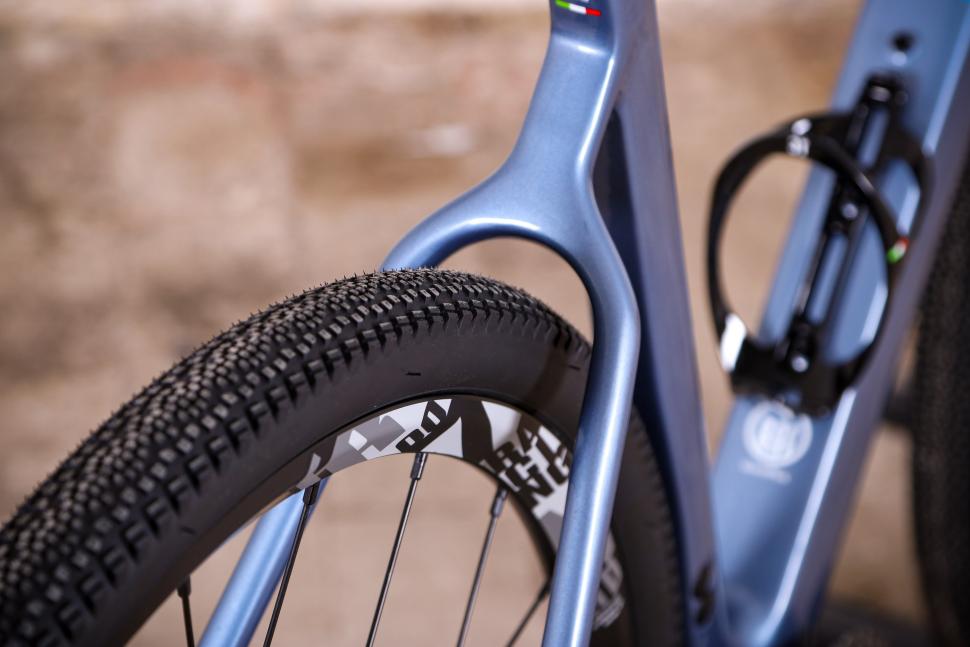







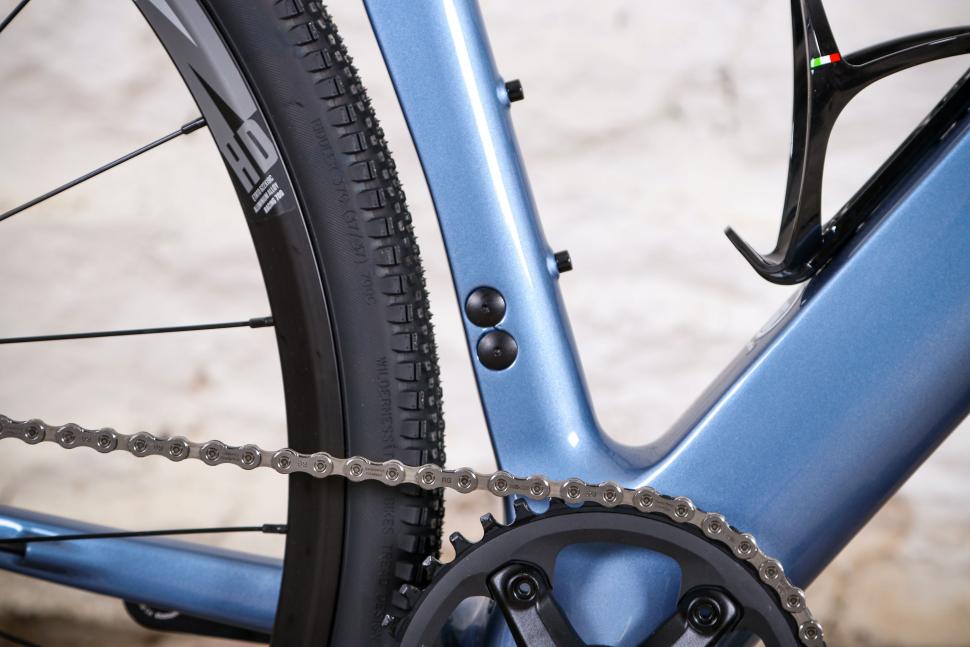




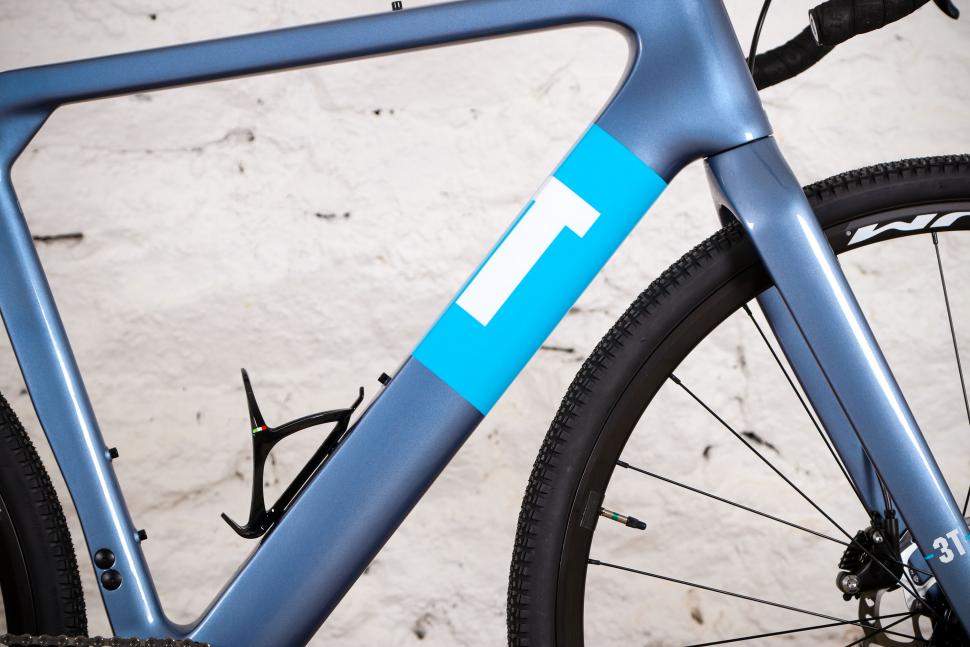




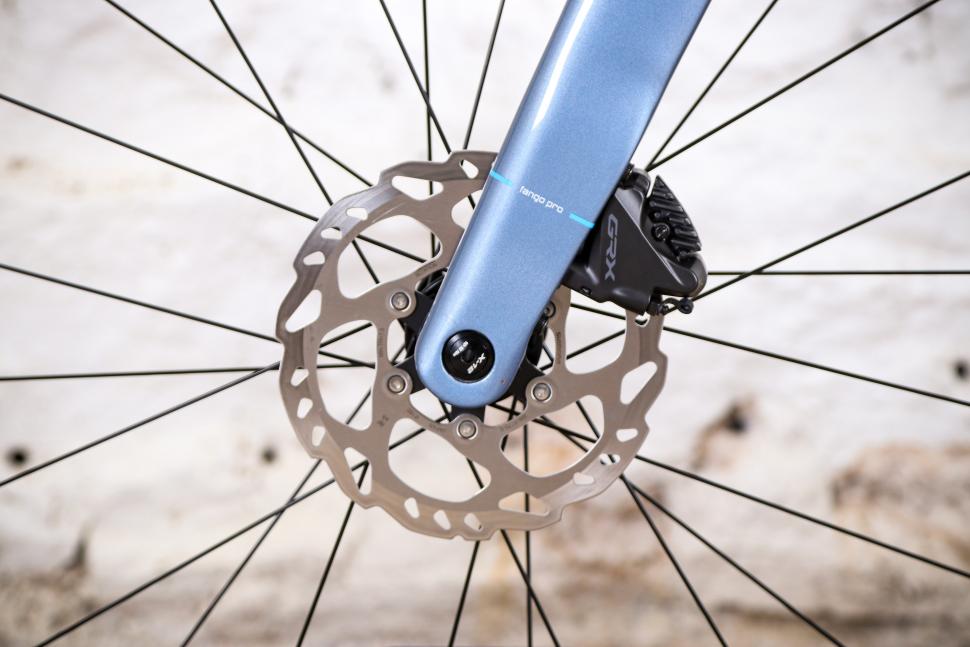

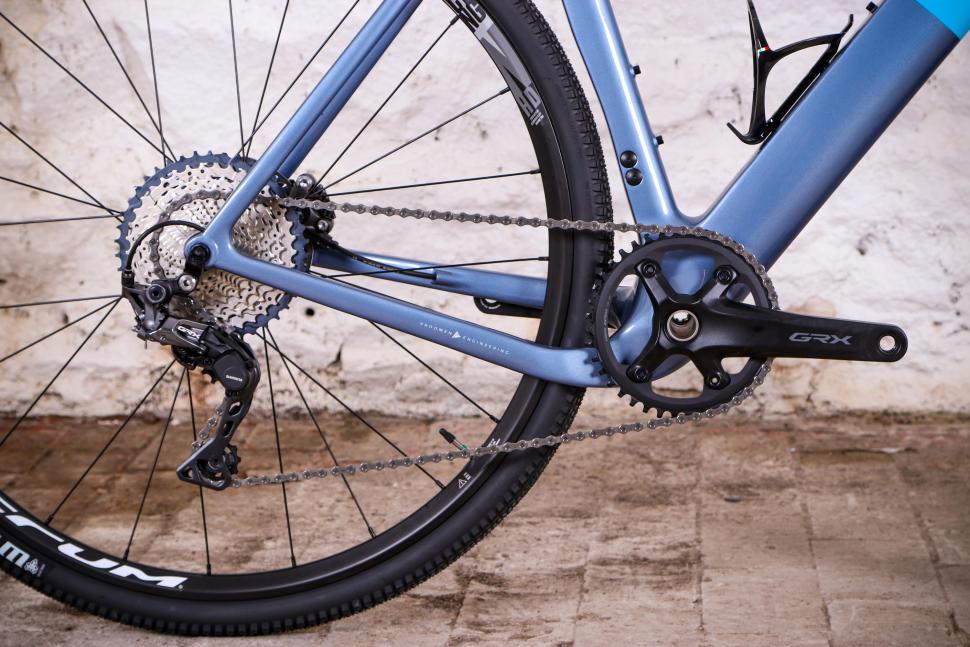


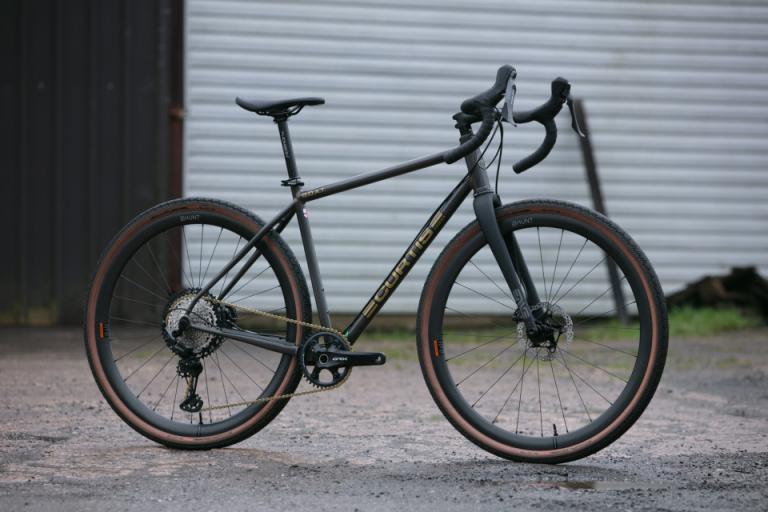


Add new comment
1 comments
ooh this or the Canyon Grail CF SL 8.0 Di2, which I also like the look of, decisions, decisions, has Mat B. ridden the Canyon? Would be interesting how they compare ride wise, neither has mudguard mounts, why neither manufacturer fails to offer these I don't know. Would make the ultimate do anything bike I reckon. Oh well ...